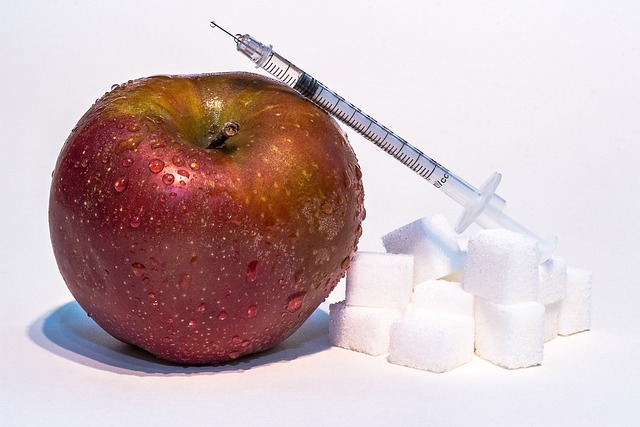While prediabetes isn’t as severe as diabetes, both conditions are affected by the food you eat. This makes your diet a very important factor when managing either condition.
Prediabetes, also known as impaired fasting glucose (IFG) or impaired glucose tolerance (IGT), is a health condition that affects a considerable 30.3 million individuals solely in the US.
When the pancreas fails to produce adequate amounts of insulin, it impacts your glucose tolerance. Insulin is crucial for the breakdown of glucose within the body. If there is a deficiency of insulin, sugar may accumulate to levels that are above normal but do not reach the threshold for diabetes diagnosis.
One positive aspect is that having prediabetes does not automatically result in a diagnosis of diabetes. It is possible to control and potentially reverse prediabetes through specific adjustments to one’s lifestyle and eating habits.
Although glucose is often blamed for being a major contributor to prediabetes and diabetes, it doesn’t necessarily mean that you should eliminate this essential nutrient from your diet altogether. While glucose does give your body the energy it needs, it’s crucial to consume it in moderation in order to maintain your overall health.
Foods to Eat With Prediabetes
The idea that a prediabetes diagnosis would entail sacrificing your preferred meals and limiting your diet may trouble you. Nonetheless, the American Diabetes Association states that a healthy diet for someone with diabetics or prediabetes is typically similar to a healthy diet for anyone.
While there is no single ideal diet for individuals with prediabetes, particular eating habits are correlated with a reduced likelihood of developing type 2 diabetes. These beneficial nutritional routines for prediabetes comprise of:
- The Mediterranean Diet
- The Dietary Approaches to Stop Hypertension (DASH) Diet
- A Vegetarian diet
- Plant-based and plant-forward eating patterns that contain some animal products but emphasize plant-based ingredients
The American Diabetes Association states that diets which prioritize the consumption of whole grains, legumes, nuts, fruits and vegetables and restrict the intake of refined and processed foods are linked to a reduced likelihood of developing type 2 diabetes.
To help maintain your blood sugar levels, load your plate with these tasty and beneficial foods.
Whole Grains
By substituting whole grains for refined ones in your diet, you could potentially experience a decrease in your blood sugar levels, a boost in your body’s insulin sensitivity, a reduction in your weight, and a lesser likelihood of developing type 2 diabetes. Whole grains are laden with fiber that is naturally more abundant than what can be found in refined grains, and this can lead to a gradual modulation of the digestion of carbohydrates into glucose in your body.
According to Jill Weisenberger, a registered dietitian nutritionist from Virginia and the creator of The Prediabetes Meal Planning Crash Course, oats and barley are highly recommended. She suggests that these two grains stand out from the others because they contain a type of fiber known as beta-glucan. Beta-glucan has several benefits, such as enhancing insulin function, reducing blood sugar levels, and even extracting cholesterol from the digestive system.
Whole grains can be obtained from an assortment of quality sources such as:
- Oats
- Barley
- Brown rice
- Bulgur
- Quinoa
- Millet
- Farro
Fruits and Vegetables
Consuming fruits and vegetables can supplement your intake of fiber, provide substantial portions without a lot of calories, and potentially reduce hunger sensations, helping you sustain a balanced weight.
According to studies, the presence of fiber and polyphenols in fruits and vegetables can slow down the digestion and assimilation of carbohydrates from food, which could help in avoiding sudden increases in blood sugar levels, decreasing oxidative stress, and reducing inflammation.
Consuming non-starchy vegetables such as broccoli, salad greens, and other vegetables with significant amounts of fiber and nutrients can prevent blood sugar spikes due to their low sugar levels. According to a review, a 9% reduction in the risk of type 2 diabetes was observed by consuming up to 300 grams of vegetables per day.
Consuming berries such as strawberries, blueberries, and cranberries can enhance insulin sensitivity and lower the likelihood of acquiring type 2 diabetes. A study that followed 2,332 healthy men aged 42 to 60 for an extended period revealed that individuals who consumed the most berries had a 35% lower chance of acquiring type 2 diabetes than those who consumed fewer berries.
Consuming fruit can assist in minimizing your likelihood of acquiring diabetes, with berries being particularly effective. According to a study, consuming 200 to 300 grams of fruit each day can reduce the risk of type 2 diabetes by 10%.
It is important to only consume whole fruits and vegetables as opposed to fruit juices, which can potentially raise the risk of type 2 diabetes due to their high sugar content and lack of fiber.
Healthy Proteins
To manage your blood sugar levels effectively, it is crucial to consume protein. By incorporating protein in your meals and snacks, you can regulate the rate at which your blood sugar elevates and sustain satiety. Nevertheless, it is essential to consider the origin of your protein. Consumption of red and processed meats is linked with a higher likelihood of developing type 2 diabetes. Therefore, prioritize quality sources of protein, such as the following:
- Beans and legumes
- Plant-based protein foods, like tofu and tempeh
- Eggs
- Greek yogurt
- Nuts and seeds
- Fish and shellfish
- Poultry
Nuts and Seeds
In addition to providing protein, fiber, and healthy fats, nuts have the potential to regulate your blood sugar levels.
A study review focused on the impact of nut and seed consumption on glucose metabolism in adults diagnosed with prediabetes. The study indicated that consuming 57 grams of pistachios or roughly 60 grams of almonds per day for four months resulted in better blood sugar levels and insulin resistance improvement.
Almonds are particularly high in fiber, providing 3.5 grams for every 1 ounce serving.
According to Toby Smithson, a registered dietitian for DiabetesEveryDay.com and author of Diabetes Meal Planning and Nutrition for Dummies, a recent study investigated the correlation between consuming almonds and indicators of prediabetes. She states that individuals who consumed two 1-ounce portions of unroasted almonds on a daily basis experienced more positive results regarding their prediabetes.
Foods to Limit With Prediabetes
To effectively manage blood sugar levels in prediabetes, it is essential to consume a diverse array of healthy foods. However, particular emphasis must be placed on restricting certain food items. For instance, Weisenberger establishes a strong link between sugar sweetened beverages and a heightened risk of type 2 diabetes. A few examples of such beverages include:
- Regular soda
- Lemonade and other fruit drinks
- Sports and energy drinks
- Sweetened tea
- Sweetened coffee beverages
Studies demonstrate the correlation between the consumption of sugary drinks and diabetes, but any edibles that contain excessive amounts of refined carbohydrates or added sugars are capable of causing a rise in blood sugar levels. Examples include fruit juice, low-fiber cereal, white bread, candy, sweet baked treats, and desserts.
Weisenberger suggests to her patients to consume minimal quantities of desserts and foods with added sugars. She explains that by concentrating on eating healthy foods, there won’t be much appetite left for foods that can have negative effects. She also adds that incorporating small portions of any food is acceptable as long as it’s part of a balanced diet.
When to See a Doctor
Although diabetes can present with symptoms such as fatigue, frequent urination, unintended weight loss, and excessive thirst, most people with prediabetes do not experience any symptoms. However, this does not imply that getting screened early is unnecessary. Detecting prediabetes early is vital in adopting healthy habits that can prevent the condition from progressing into type 2 diabetes.
Regardless of other risk factors, the American Diabetes Association now suggests that all adults should start screening for prediabetes and diabetes at the age of 35.
Individuals who have a considerable amount of excess weight or are obese and also have one or multiple added risk factors should commence screening at an earlier stage. Risk factors for prediabetes, as suggested by both the Centers for Disease Control and Prevention and the American Diabetes Association, are as follows:
- Living with a lot of extra weight or obesity
- Being 45 years or older
- Having a parent, brother or sister with type 2 diabetes
- Being physically active less than three times a week
- Having high blood pressure
- Ever having gestational diabetes during pregnancy or giving birth to a baby weighing more than nine pounds
- Having polycystic ovary syndrome (PCOS)
- Being of African American, Latino, Native American, Asian American or Pacific Islander descent
Isaacson recommends that individuals who suspect they may have prediabetes or diabetes should schedule a medical examination for testing. For those who are uncertain about their chances of developing the conditions, they can undergo the CDC Prediabetes Risk Test and discuss their risk factors with their primary care provider.
Pros and Cons
Familiarize yourself with the advantages and disadvantages of embarking on a prediabetic diet by referring to the following list.
Pros
Preventing diabetes progression is possible with this diet as it eliminates simple and refined sugars, which effectively prevents blood sugar spikes that may cause elevated blood sugar levels. Consequently, this can effectively delay the onset of diabetes.
Assisting in the reversal of insulin resistance, the prediabetes diet facilitates the reduction of blood sugar levels, thereby enabling insulin to enter cells more effectively.
According to research, the prediabetes diet can enhance weight loss by promoting a healthy diet that omits processed foods and includes beneficial nutrients such as proteins, complex carbohydrates, and fiber, which contribute to weight loss and lower the likelihood of obesity.
To accommodate for desires such as alcohol, this diet promotes adherence by allowing for occasional consumption of healthier alcoholic alternatives.
Cons
The prediabetes diet lacks specific food quantities, even though it recommends a diet rich in protein, complex carbohydrates, and fiber to regulate blood sugar levels. Serving size guidelines are essential for maintaining glucose levels.
Revised: Low-carb diets have been linked to several negative outcomes, raising concerns about their safety. The pre-diabetes diet, which recommends a low-carb eating regimen, could potentially be hazardous for individuals seeking to improve their dietary habits.
Is The Prediabetic Diet A Healthy Choice For You
Choosing a prediabetic diet can help to lower your blood sugar to safer levels if it is becoming dangerously high. However, as this diet tends to be nutrient-rich and low in sugar, it may be a great option for anyone seeking to adopt a healthier eating pattern.
Health Benefits
The commendable diet for individuals at risk of developing diabetes is known for its potential to reduce blood sugar levels, which is why it is credited for reversing or slowing down the advancement of the condition.
Following this diet can aid in maintaining healthy blood pressure levels. Moreover, when paired with physical activity, it provides additional advantages such as decreased cholesterol, shedding of extra pounds, and higher energy levels throughout the day.
Health Risks
Even though the prediabetes diet has its benefits, there is a possibility of some risk involved. Due to its highly restrictive low-carb nature, it is not yet entirely agreed upon whether it is safe to follow this diet for extended durations of time. This could potentially result in ketosis, wherein the body burns fat instead of carbohydrates for energy, leading to unpleasant consequences such as keto-breath, keto-flu, and reduced energy levels.
Similarly, extended limitation of carbohydrates could result in negative impacts such as kidney harm, osteoporosis, and other harmful consequences.
Other Ways to Manage Prediabetes
Apart from your dietary habits, there are other elements that can elevate the likelihood of developing prediabetes.
Prediabetes may be caused by various factors such as obesity, leading a sedentary lifestyle, and reaching the age of 45 or older. Similarly, specific risk factors such as genetic disposition, delivering a baby weighing 9 pounds or more, and belonging to ethnic groups like Hispanic, Asian, or African/Native American, could elevate the likelihood of prediabetes.
To manage and even mitigate pre-diabetes caused by these risk factors, the following measures can be implemented:
Lifestyle Changes
Focusing on obesity through specialized programs is a vital approach in controlling prediabetes and minimizing the likelihood of developing diabetes. Effective management of obesity may necessitate adopting a combination of healthy eating, physical activity, and stress-reducing practices. These measures can provide enduring advantages for your overall health.
From 1986 to 1992, a research was conducted where individuals were assigned to groups focusing on lifestyle changes in terms of diet and physical activity. After 14 years of the study, the participants were contacted again, and it was discovered that implementing group-based lifestyle interventions could postpone or avert the onset of diabetes for as long as 14 years after the initial intervention.
Medication
Drugs can be used to manage prediabetes by lowering blood sugar levels and the likelihood of developing type 2 diabetes. Usually, these medications are prescribed if there is an elevated risk of diabetes, or when lifestyle modifications have been ineffective in maintaining stable blood sugar levels.
The ADA has only approved Metformin as a medication for prediabetes which has shown positive results such as reduction in BMI and an improved cholesterol profile.
Bariatric Surgery
These procedures are designed to modify the digestive system in order to facilitate successful weight loss.
Bariatric procedures operate in various manners, such as limiting calorie consumption by decreasing the stomach’s capacity to accommodate food or hindering the absorption of nutrients by the body. Occasionally, a mixture of the two methods is used.
The surgical options may include a gastric bypass, sleeve gastrectomy, or an adjustable gastric band.
Side notes
Receiving a diagnosis of prediabetes may be daunting, but it’s important to remember that adopting healthy lifestyle habits can aid in managing and potentially reversing the condition. To control prediabetes, a well-rounded diet comprising of complex carbohydrates, proteins, low-sugar vitamins is tremendously beneficial.
When managing pre-diabetes, it is crucial to steer clear of easily digestible carbohydrates that can result in sudden rises in blood glucose. Additionally, adhering to a nutritious eating plan and integrating lifestyle modifications can have a significant positive impact on one’s overall health.



